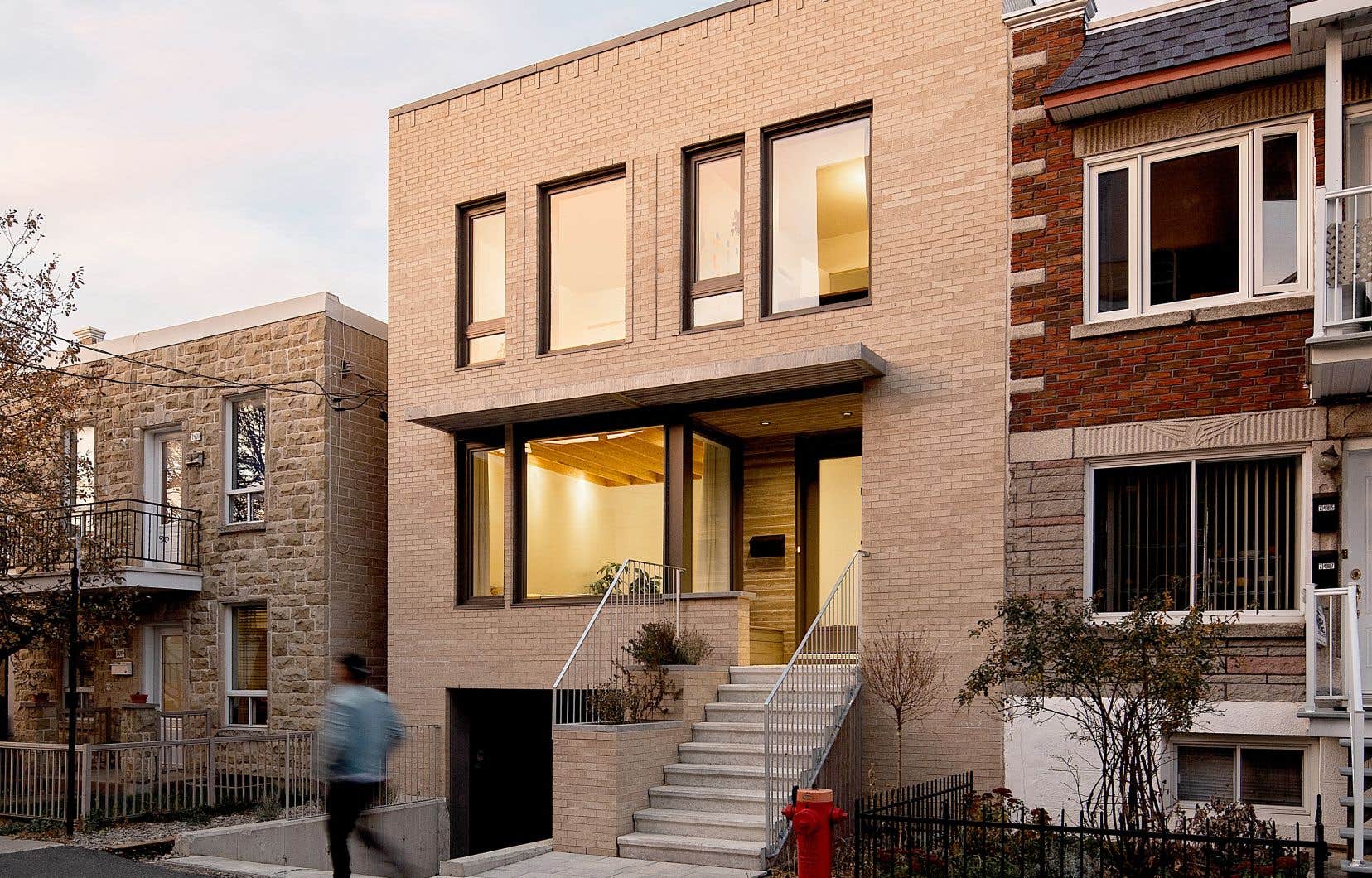This text is part of the special Real Estate section
At Olivier and Gabrielle’s, in winter, the sun flows freely. In summer, on the contrary, a canopy on the south facade blocks the harsh rays and offers residents a cool home, spared from the sweltering days of August. All this thanks to the work of Jean-François St-Onge, creative director and partner at ADHOC Architectes, who designed the family residence in the Villeray district of Montreal.
The watchword for this building: passive devices. Inspired by the German standard of passive house, the architect wanted to build a living space that wastes as little energy as possible. “The building sector is the one that consumes the largest share of the energy produced. Its impact on the environment, on the climate and on the world’s energy reserves is therefore very high,” reads the website of Bâtimentpassive Québec, which aims to make this approach known to us.
Instead of integrating expensive and obsolete technologies to regulate temperature and light, Jean-François St-Onge preferred to use the built environment to achieve his ends. “Our strategies are not based on mechanics or electronics which tend to break and it takes specialists to repair them”, observes the architect. Hence the idea of “passivity”: no need to activate any system whatsoever to heat or cool, the house takes care of it all by itself.
Nonchalant savings
It takes a keen eye to spot the eco-friendly features of this beige brick home. Apart from his looks modern, nothing distinguishes it from its neighbours. The only element that clashes, the awning on the facade is the first “passive” element that a visitor will come across on arrival. “It’s not part of Montreal’s heritage,” concedes Jean-François St-Onge. The brise-soleil is rarely seen in urban areas. It comes to cut the sun in summer, when it is undesirable, and it is positioned so that in winter, a maximum of light enters the house. »
Inside, the visitor’s gaze will certainly be drawn to the large empty space in the center of the house, just above the kitchen. “The hole creates a chimney effect and helps ventilation,” explains the creative director. In summer, the heat on the ground floor rises to the top, which allows it to be evacuated. At the very top of this “double height”, a skylight helps to illuminate the room.
Make the ecological attractive
On the site of an old house shoe box “in very poor condition” now rise three floors to densify the site. “It’s also a way of sprucing up rue Saint-André, which is unpopular because it’s just behind Saint-Hubert,” observes Jean-François St-Onge.
Nothing was left to chance. On the roof hides a terrace surrounded by a green roof, which contributes to “increase the thermal resistance of the envelope”, according to the press release of the firm. Inside, the designer chose to leave the cross-laminated timber structures visible. “It’s a brilliant material because, unlike long beams which require large shafts, here we work with small pieces of glued wood, which optimizes the use of logs”, enthuses the architect.
The garage, a legacy of the “flaws of the transport cocktail”, is designed to be transformed one day into a workshop, or even into independent accommodation. “Indoor parking reduces car use,” says the architect. When we have to move her because there’s street cleaning or snow removal, we end up taking her to go to work. By making the vehicle a little less visible, he believes, we increase the chances that residents will opt for active transportation instead.
As the name of the firm indicates, at ADHOC the work teams are composed each time on purpose to meet the needs of the project. Jean-François St-Onge is proud of the previous projects to which he contributed, and of the teams of his firm to which were added specialists such as writers, industrial designers or even programmers. In the rue Saint-André project, it is the client who has become a collaborator of choice for the architect. “He was a young entrepreneur who wanted to specialize in green building,” he recalls. He wanted a family home integrating the principles of sustainable development. The result: an ecological family home in which it is good to live.
This special content was produced by the Special Publications team of the Duty, pertaining to marketing. The drafting of Duty did not take part.
